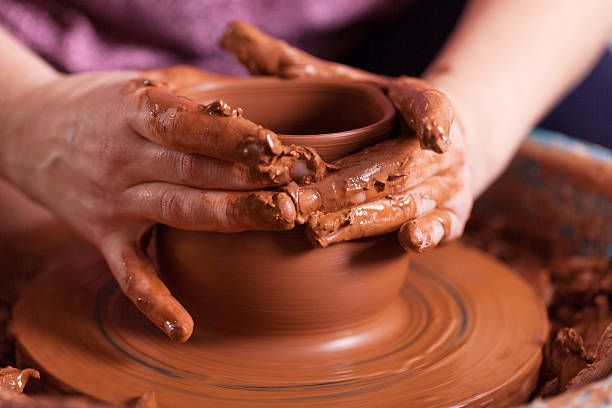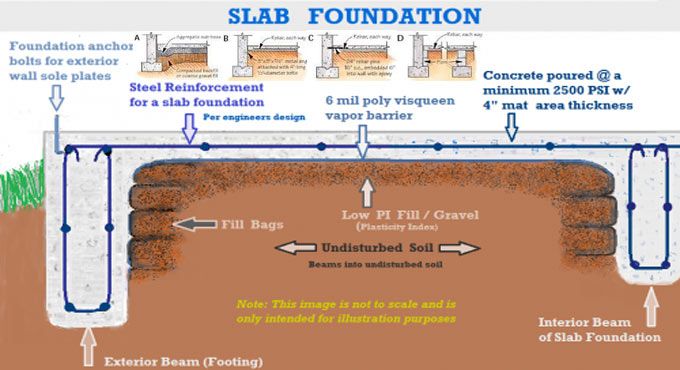Is It Safe To Use Moldy Clay?
Moldy clay refers to any clay, whether raw or bisque fired, that has visible mold growth. Mold spores are microscopic fungi that float in the air and can land on clay surfaces when stored. If the clay stays damp and stored in humid environments, these spores can rapidly multiple to create fuzzy mold growth. Mold on clay is not just unsightly, but raises concerns about health risks when working with contaminated clay or using fired clay products that had mold.
While mold is common on clay surfaces, there is debate on whether this poses any real danger. Some research suggests moldy clay is safe to work with as long as proper precautions are taken. However, mold can also introduce harmful toxins and trigger allergic reactions in some individuals. This article will analyze the different types of mold that grow on clay, evaluate potential health risks, and provide tips for dealing with and preventing moldy clay.
Types of Mold Found in Clay
There are many different genera of mold that can grow in moist clay, but the most common include Aspergillus, Penicillium, and Fusarium (https://community.ceramicartsdaily.org/topic/24794-toxic-mold-in-clay/). Mold spores are present in the air and can contaminate clay when it is being stored.
Some types of mold produce mycotoxins that can cause health issues in humans. These include certain species of Aspergillus and Fusarium. However, Penicillium is the genus that contains the mold used to make penicillin antibiotics, so not all mold is toxic (https://www.thesprucecrafts.com/q-a-mold-reactions-to-clay-3976330).
The most dangerous molds produce aflatoxins and trichothecenes. Aflatoxins are carcinogenic, while trichothecenes inhibit protein synthesis, damaging DNA and suppressing the immune system. Other molds may cause allergic reactions but are not necessarily toxic (https://www.reddit.com/r/Pottery/comments/ew8esw/moldy_clay/).
So while some mold genera like Penicillium are harmless, kinds that produce mycotoxins like certain Aspergillus and Fusarium species can be dangerous. It’s important to test clay for toxic molds before using it.
Health Risks
Exposure to mold in clay poses several health risks, especially for those who are sensitive or allergic to mold spores. The most common health issues are:
Allergic Reactions – Mold spores can cause allergic reactions such as sneezing, runny nose, red eyes, and skin rash. Mold allergy is an immune system reaction to inhaled mold spores that triggers these symptoms. People who are allergic to molds may experience more severe reactions. According to the CDC, symptoms are more likely to occur in people previously exposed to molds and prone to allergies in general (1).
Respiratory Issues – Breathing in mold spores can irritate the lungs and trigger respiratory problems like coughing, wheezing, and difficulty breathing. People with asthma or hypersensitivity pneumonia are at higher risk. Mold exposure may exacerbate asthma attacks and cause shortness of breath. Chronic lung inflammation can also occur. According to Princeton University, long-term mold exposure when working with clay increases the risk of hypersensitivity pneumonia, asthma, and other lung problems (2).

Mycotoxin Poisoning – Some molds produce microscopic toxins called mycotoxins. Inhaling high levels of mycotoxins can cause fever, headache, sore throat, and fatigue. Very high exposure can damage the liver, kidneys, and central nervous system. Mycotoxin poisoning is rare but can occur in people exposed to extensive mold growth over time in an indoor environment (1). The level of toxins in clay is usually low, but mold growth can increase the risk.
(1) https://www.cdc.gov/mold/faqs.htm
(2) https://ehs.princeton.edu/health-safety-the-campus-community/art-theater-safety/art-safety/ceramics
Testing for Mold
There are a couple ways to test clay for mold contamination before deciding to use it for a project:
Visual Inspection
One method is a simple visual inspection of the clay. Look closely at the surface and inside the clay body for any signs of mold growth like fuzziness, discoloration, or strange odors. Even a small amount of mold can spread quickly once introduced to the damp clay medium (Ceramic Arts Network, “Testing 1..2…3: How to Test Clay Bodies to Find the Right Sculpture or Pottery Clay for Your Work”).
Lab Tests
For a more definitive test, clay samples can be sent to a lab for mold testing. This will determine if mold spores are present and identify the genus/species. While visual inspection can miss hidden mold, lab tests are able to detect even small amounts of contamination. Some art supply retailers offer free mold testing kits so you can easily submit a clay sample for analysis (Smooth-On, “What type of Clay Should I Use?”).
Removing Mold from Clay
There are a few effective methods for removing mold from clay:
Baking
Baking clay at low temperatures between 150-200°F can kill mold spores without damaging the clay. Ensure the clay is completely dry first. Bake Sculpey polymer clay at the manufacturer’s recommended temperature (generally 275°F) to fully sanitize it (Removing Mold from clay – YouTube).
Chemical Disinfectants
Using a 10% bleach solution or 70% isopropyl alcohol can disinfect clay. Thoroughly wash the clay after to remove any chemical residue. Take care not to soak porous clay in liquids which may become trapped in the material.
Freezing
Freezing clay for 24-48 hours at below 0°F can also kill mold spores. Ensure clay is sealed in an airtight container first. This works best for polymer clays as freezing can damage ceramic clays.
Preventing Mold Growth
Proper storage is key for preventing mold growth in clay. Clay should be stored in an airtight container or thick plastic bag to prevent air exposure. According to reddit users, keeping clay in a damp but not soggy state deters mold growth. Allowing clay to completely dry out increases the chance of mold taking hold when re-wetting it. Be sure to sanitize any tools that come into contact with clay between uses to prevent spreading mold spores.
According to The Spruce Crafts, one of the best ways to prevent mold from developing is to use up clay quickly and not leave wet clay sitting for extended periods of time. However, if you do need to store clay long-term, keeping it as close as possible to the consistency it was at during purchase is ideal. Letting clay dry out completely makes it more susceptible to mold growth when rehydrated.
Safe Clay Alternatives
If you discover mold in your clay and want to avoid using it, there are a couple safe alternatives:
Commercial polymer clays like Sculpey and Fimo are manufactured in sanitary conditions and do not contain any natural materials that could grow mold. Polymer clays like Sculpey and Fimo can be purchased from craft stores or online retailers in a wide variety of colors and textures, making them a versatile substitute for moldy natural clays.
You can also make your own natural clay at home using ingredients like flour, salt, cream of tartar, and water or oil. Homemade clay recipes allow you to control the ingredients and ensure no contaminants are present. When working with homemade clay, be sure to store any unused clay in an airtight container in the refrigerator to prevent future mold growth.
When to Throw Out Clay
In some cases, it is necessary to throw out your clay rather than try to salvage it. Some signs that your clay should be discarded include:
Severely Moldy Clay
If your clay is covered in thick, furry mold that is difficult to remove, it is best not to use it. The spores have likely penetrated deep into the clay, and could potentially cause respiratory issues if particles become airborne during use. When mold growth is severe, it is safest to discard the clay.
Clay of Unknown Toxicity
If you purchased clay from an unknown source or have leftover clay that has been sitting unused for years, it may be safest to throw it away. Old clay can grow toxic molds like aspergillus or stachybotrys, which release mycotoxins that are hazardous if inhaled.
[1]
Health Risks
Exposure to mold spores can trigger allergic reactions, asthma attacks, and other respiratory problems for some individuals. Mold may also contaminate the finished ceramic piece. If you have health concerns or the clay poses a risk of contaminating food surfaces, it is better to be cautious and discard the moldy clay.
Protecting Yourself
When working with moldy clay, it’s important to take precautions to protect your health. Proper ventilation, masks, and gloves can help reduce exposure to mold spores and other contaminants.
Work in a well-ventilated area when dealing with moldy clay. Open windows, use fans, or work outdoors to allow fresh air circulation. This helps prevent a buildup of mold spores that could be inhaled (Safety Rules for Ceramics).
Wearing a protective face mask can also help filter out mold spores and clay dust. Use a N95 respirator mask designed to capture fine particles. Make sure the mask fits tightly to create a good seal on your face (Moldy clay? : r/Pottery).
It’s also recommended to wear gloves when handling moldy clay. The mold and clay chemicals can irritate bare skin and potentially cause dermatitis. Opt for thick rubber gloves that cover your wrists and part of your forearms as well.
Taking these simple precautions can greatly reduce your contact with mold, clay dust, and other contaminants when working with moldy clay.
Conclusion
In summary, mold growth in clay poses potential health risks, especially for those with allergies or compromised immune systems. While sometimes mold can be removed from clay with disinfectants, harsh scrubbing, and drying, it’s often best to discard moldy clay if the contamination is extensive.
To prevent mold growth in the first place, keep your clay in an airtight container in a cool, dark place. Make sure your hands and sculpting tools are clean before working with clay, and don’t introduce any organic materials that could harbor mold spores. Consider switching to polymer or resin-based modeling compounds if mold is an ongoing issue with natural clays.
Most importantly, listen to your body and be aware of any symptoms that may indicate an allergic reaction or illness if working with moldy clay. Stop using it immediately if you have any concerns. With proper precautions, sculpting and clay crafts can continue to be an enjoyable and safe hobby.


